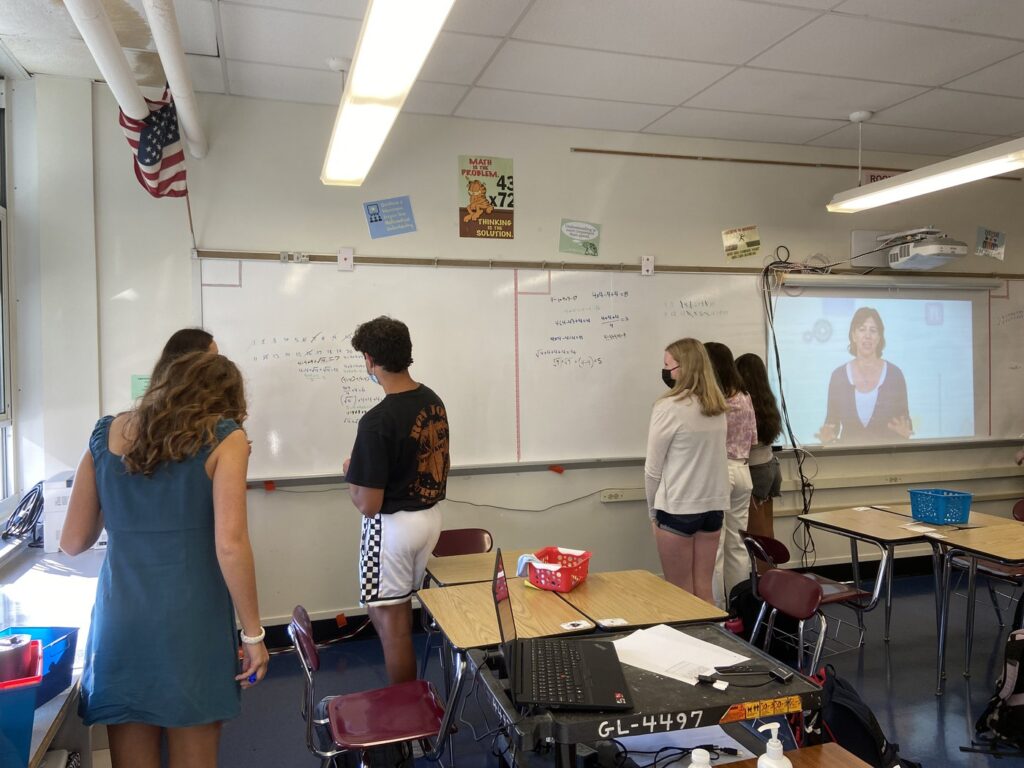
Creating Thinking Classrooms
Berkeley Heights Public Schools
It is no surprise that math can be an extremely difficult subject for any student. It is not because students can’t learn the concepts, but rather, students have a difficult time being told how to do it, memorizing how to do it, and then having to implement it.
For many years it has been all about memorizing rather than thinking, believes Dr. Peter Liljedahl, professor of mathematics education. Having spent 15 years researching how to get students to “think” rather than memorize to help create the ideal setting for deep mathematics learning to occur, Dr. Liljedahl created the concept of “Thinking Classrooms.”
After observing a local school district who had implemented “Thinking Classrooms,” Nicole Manganelli, mathematics teacher at GLHS, was so inspired with what she saw that she brought the concept back to her GL students.
“The next day my supervisor, Drew Ziobro, had my room covered in white boards so I could begin the process with my students,” Manganelli said. “It was so interesting to watch the transformation. Students were really engaged. There is something about vertical learning that just makes it easier.”
Unfortunately, just as quickly as Manganelli began transitioning to a “Thinking Classroom,” the district was closed due to Covid-19. However, that did not deter her from researching as much as she could about this learning strategy and fully implementing it once students returned to school.
“This is the first year we have really been able to use this method consistently,” Manganelli said.
When students walk into class, they pick a card and are randomly placed into groups of three. The groups change daily and are not based on ability. Students are then presented with questions that they need to solve at the white board.
Manganelli is constantly walking the classroom and observing what the students are doing. If she sees they are stuck on something she provides them with “thinking questions” rather than telling them what their mistake was or how they should solve the problem. This method allows them to become more independent and to work together to problem solve.
“Before ‘Thinking Classrooms,’ students would learn a concept and, in a day, or week it was gone. So many students when they got to high school had no recollection of the concepts they had learned. Not because they didn’t learn it, but because they didn’t remember it,” said Manganelli. “By working in small groups and discovering the concepts on the white boards, they are learning them and thinking through them, rather than just mimicking what they are being told.”
Following the time at the white boards, the class comes back together to discuss what they learned and identify what is important for them individually to remember.
“It’s amazing to walk around the classroom and listen to them talking and ‘thinking’ about math. It’s something I have never heard before. And the students and I agree that we much prefer this way of learning rather than sitting at a desk,” added Manganelli.’’
